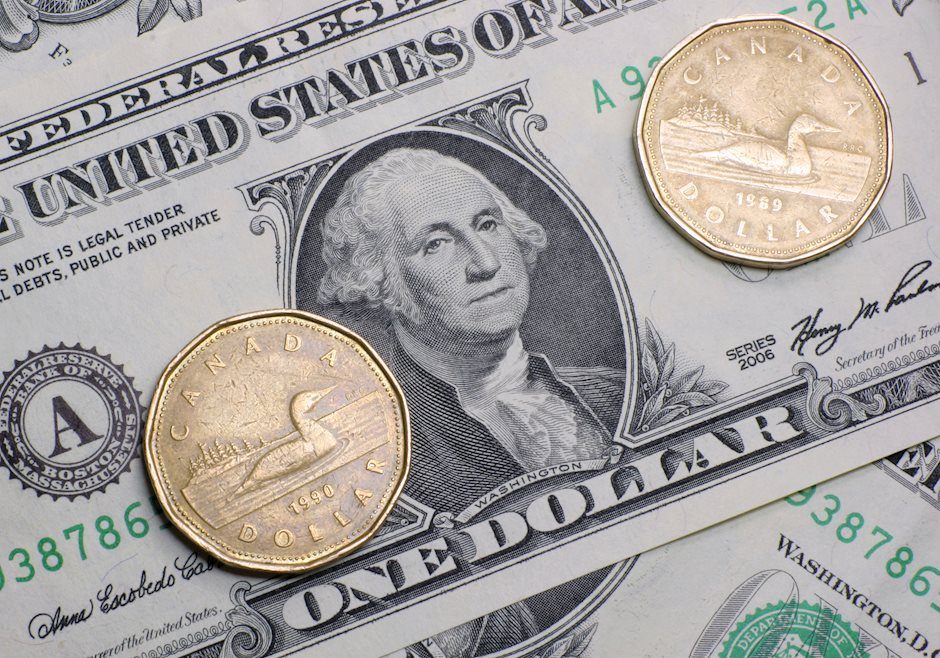USD/CAD holds ground above 1.3650 as Oil prices decline
- USD/CAD faces challenges as the commodity-linked CAD struggles due to lower Oil prices.
- WTI Oil price depreciates due to a slowing Chinese economy but its downside could be limited by lower US Oil stockpiles.
- Traders await speeches from Fed officials Thomas Barkin and Christopher Waller on Wednesday.

USD/CAD retraces its recent losses from the previous session, trading around 1.3680 during the early European hours on Wednesday. Lower crude Oil prices put pressure on the commodity-linked Canadian Dollar (CAD). Given the fact that Canada is the biggest Oil exporter to the United States (US).
West Texas Intermediate (WTI) Oil price trades around $79.80 per barrel at the time of writing. This decline is attributed to a slowing Chinese economy, which is reducing demand in the world's largest Oil-importing country.
However, the Oil price may limit its downside due to the declining US Oil stockpiles. The American Petroleum Institute (API) reported a decline of 4.4 million barrels in weekly crude Oil stock for the week ending July 12. Analysts surveyed by Reuters had estimated a smaller decrease of 33,000 barrels. The US Energy Information Administration will release its official storage report later in the North American session.
On Tuesday, data showed that Canada's headline inflation rate eased to 2.7% in June, down from 2.9% in the previous month. This aligned with expectations and marked the sixth consecutive month within the Bank of Canada's (BoC) target range.
The softer Canadian inflation readings have spurred expectations that the Bank of Canada (BoC) would cut interest rates further next week. "The inflation data for June gave the Bank of Canada what it needed in order to cut interest rates at next week's meeting," said Katherine Judge, senior economist at CIBC Capital Markets.
Federal Reserve (Fed) Board of Governors member Dr. Adriana Kugler recently noted that while inflationary pressures have eased, the Fed requires more data to justify a rate cut. Dr. Kugler suggested that if upcoming data fails to show progress towards the 2% inflation target, maintaining current rates longer may be appropriate.
Market focus turns to key US economic data and the Fed Beige Book on Wednesday, alongside speeches from Fed officials Thomas Barkin and Christopher Waller.
Canadian Dollar FAQs
The key factors driving the Canadian Dollar (CAD) are the level of interest rates set by the Bank of Canada (BoC), the price of Oil, Canada’s largest export, the health of its economy, inflation and the Trade Balance, which is the difference between the value of Canada’s exports versus its imports. Other factors include market sentiment – whether investors are taking on more risky assets (risk-on) or seeking safe-havens (risk-off) – with risk-on being CAD-positive. As its largest trading partner, the health of the US economy is also a key factor influencing the Canadian Dollar.
The Bank of Canada (BoC) has a significant influence on the Canadian Dollar by setting the level of interest rates that banks can lend to one another. This influences the level of interest rates for everyone. The main goal of the BoC is to maintain inflation at 1-3% by adjusting interest rates up or down. Relatively higher interest rates tend to be positive for the CAD. The Bank of Canada can also use quantitative easing and tightening to influence credit conditions, with the former CAD-negative and the latter CAD-positive.
The price of Oil is a key factor impacting the value of the Canadian Dollar. Petroleum is Canada’s biggest export, so Oil price tends to have an immediate impact on the CAD value. Generally, if Oil price rises CAD also goes up, as aggregate demand for the currency increases. The opposite is the case if the price of Oil falls. Higher Oil prices also tend to result in a greater likelihood of a positive Trade Balance, which is also supportive of the CAD.
While inflation had always traditionally been thought of as a negative factor for a currency since it lowers the value of money, the opposite has actually been the case in modern times with the relaxation of cross-border capital controls. Higher inflation tends to lead central banks to put up interest rates which attracts more capital inflows from global investors seeking a lucrative place to keep their money. This increases demand for the local currency, which in Canada’s case is the Canadian Dollar.
Macroeconomic data releases gauge the health of the economy and can have an impact on the Canadian Dollar. Indicators such as GDP, Manufacturing and Services PMIs, employment, and consumer sentiment surveys can all influence the direction of the CAD. A strong economy is good for the Canadian Dollar. Not only does it attract more foreign investment but it may encourage the Bank of Canada to put up interest rates, leading to a stronger currency. If economic data is weak, however, the CAD is likely to fall.
Author

Akhtar Faruqui
FXStreet
Akhtar Faruqui is a Forex Analyst based in New Delhi, India. With a keen eye for market trends and a passion for dissecting complex financial dynamics, he is dedicated to delivering accurate and insightful Forex news and analysis.

















